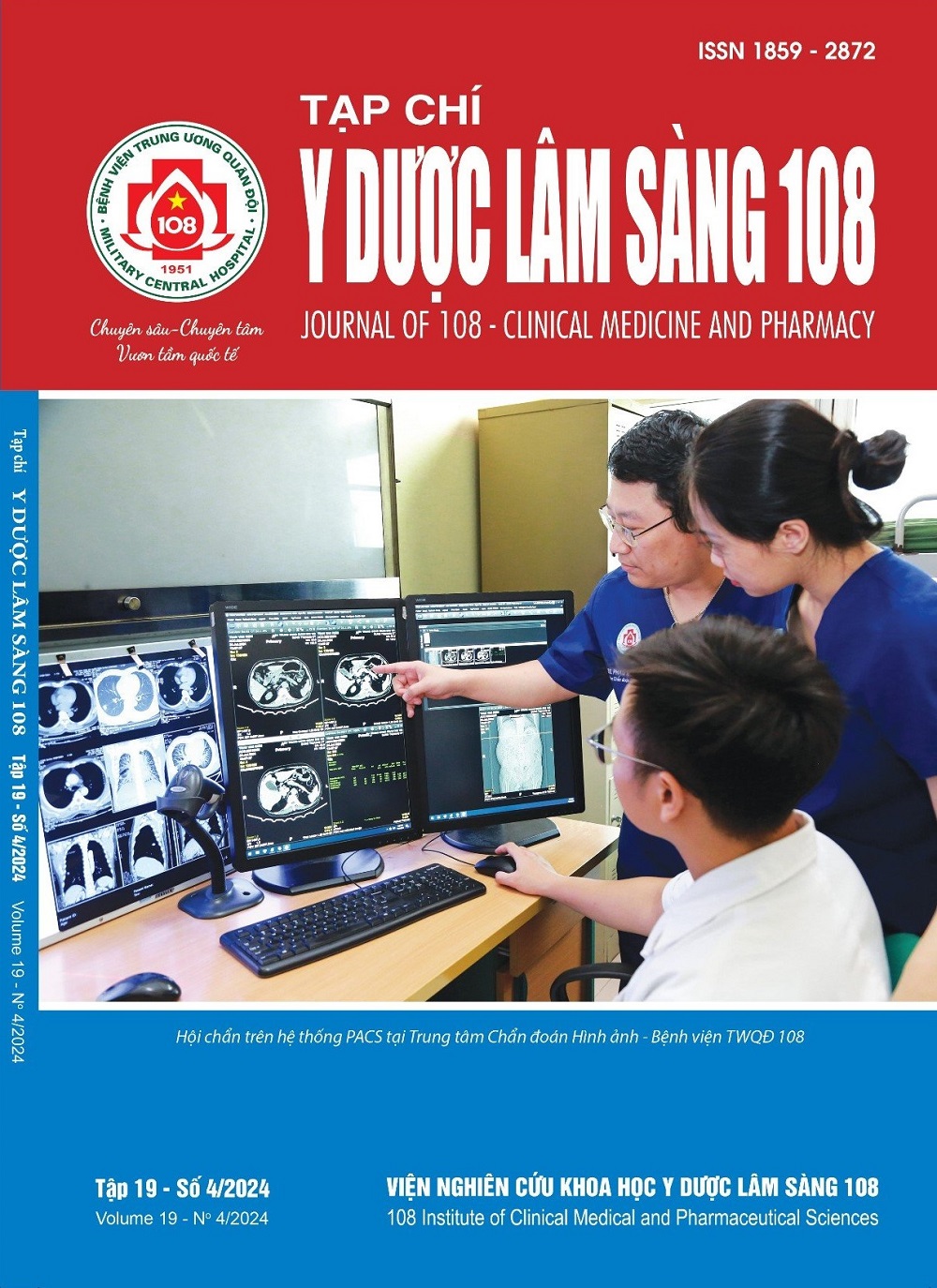Characteristics and factors related to mortality in patients with septic shock and reduced white blood cell count
Main Article Content
Keywords
Abstract
Objective: To assess certain characteristics and factors related to mortality in septic shock patients with reduced white blood cell count. Subject and method: A retrospective study, cross-sectional in design, was conducted on 27 patients with septic shock and reduced white blood cell count at the Intensive Care Center - 108 Military Central Hospital from 2021 to 2022. The diagnosis of septic shock was based on the criteria of Sepsis-3 (2016). Data were collected on characteristics such as infection sources, laboratory tests, and in- hospital mortality. Result: The average age in the study group was 68.2 years, with males accounting for 88.9% and the mortality rate was 81.5%. APACHE II, SOFA, and SAPS 2 scores were significantly higher in the deceased group compared to the surviving group. Reduced platelet count and decreased serum albumin levels were associated with mortality in septic shock patients with reduced white blood cell count.
Article Details
References
2. Na SJ, Oh DK, Park S, Lee YJ, Hong SB, Park MH, Ko RE, Lim CM, Jeon K; Korean Sepsis Alliance (KSA) Study Group (2022) Clinical characteristics and outcomes of neutropenic sepsis: A multicenter cohort study. Shock 57(5): 659-665. doi: 10.1097/SHK.0000000000001907.
3. Singer M, Deutschman CS, Seymour CW et al (2016) The third international consensus definitions for sepsis and septic shock (Sepsis-3). JAMA 315(8): 801-810.
4. Assinger A, Schrottmaier WC, Salzmann M, Rayes J (2019) Platelets in sepsis: An update on experimental models and clinical data. Front Immunol 10:1687. doi: 10.3389/fimmu.2019.01687.
5. Claushuis TA, van Vught LA, Scicluna BP et al (2016) Thrombocytopenia is associated with a dysregulated host response in critically ill sepsis patients. Blood 127(24): 3062-3072.
6. Hua Y, Wang R, Yang J et al (2023) Platelet count predicts mortality in patients with sepsis: A retrospective observational study. Medicine (Baltimore) 102(38): 35335.
7. Kim SM, Kim YJ, Kim YJ et al (2022) Prognostic impact of neutropenia in cancer patients with septic shock: A 2009-2017 nationwide cohort study. Cancers (Basel) 14(15).
8. Kochanek M, Schalk E, von Bergwelt-Baildon M et al (2019) Management of sepsis in neutropenic cancer patients: 2018 guidelines from the Infectious diseases working party (AGIHO) and intensive care working party (iCHOP) of the german society of hematology and medical oncology (DGHO). Ann Hematol 98(5): 1051-1069.
9. Kruse JM, Jenning T, Rademacher S et al (2016) Neutropenic sepsis in the ICU: Outcome predictors in a two-phase model and microbiology findings. Crit Care Res Practz: 8137850. doi: 10.1155/2016/8137850.
10. Legrand M, Max A, Peigne V et al (2012) Survival in neutropenic patients with severe sepsis or septic shock. Crit Care Med 40(1): 43-49.
 ISSN: 1859 - 2872
ISSN: 1859 - 2872
